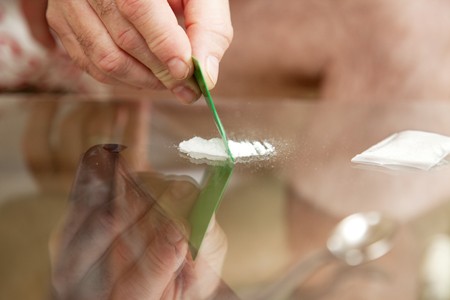Weight Loss Drug Lorcaserin Cuts Opiate Use in Rats
 Lorcaserin is a drug approved for weight loss in very obese patients. It stimulates serotonin 5 HT-2c receptors thought to control appetite by inducing the secretion of the polypeptide pro-opiomelanocortin. In a 2017 article in the journal ACS Chemical Neuroscience, researcher Kathryn Cunningham and colleagues reported that the drug had reduced opiate use and craving in rats. Previous research by Cunningham showed that lorcaserin reduced cocaine seeking in rats.
Lorcaserin is a drug approved for weight loss in very obese patients. It stimulates serotonin 5 HT-2c receptors thought to control appetite by inducing the secretion of the polypeptide pro-opiomelanocortin. In a 2017 article in the journal ACS Chemical Neuroscience, researcher Kathryn Cunningham and colleagues reported that the drug had reduced opiate use and craving in rats. Previous research by Cunningham showed that lorcaserin reduced cocaine seeking in rats.
Most treatments for opiate addiction work by occupying opiate receptors so that opiates are prevented from stimulating them, thus reducing the pleasurable effects of the opiates. It is not yet well understood how drugs like lorcaserin that target serotonin 5 HT-2c receptors affect the brain’s reward system.
In the study, rats were trained to self-administer oxycodone. They were also trained to associate certain lights and sounds with oxycodone availability. Lorcaserin reduced the rats’ drug-seeking behavior and also weakened the link between the light and sound cues and the drug-seeking behavior.
Future research may explore whether drugs like lorcaserin can reduce opiate use in people.
Currently, there are a few options to treat opiate addiction. N-acetylcysteine (NAC) is an over-the- counter (nonprescription) drug that has been shown to decrease opiate use in both animals and humans. NAC also decreases use or craving for many other drugs of abuse including cocaine, alcohol, nicotine, and marijuana. NAC reduces the excitatory glutamate signal in the reward area of the brain (the nucleus accumbens) by increasing the number of transporters carrying glutamate out of the synapse and into glial cells. It has an excellent side effects profile and can readily be used in opiate-addicted patients.
Opiate replacement therapy with methadone or the partial opiate agonist buprenorphine is one treatment option for opiate addiction. Buprenorphine is also combined with the opiate antagonist naloxone in a drug called Suboxone, which can reduce opiate use. Naloxone is a pure opiate antagonist that can rapidly reverse the respiratory-suppressing effects of an overdose of opiates.
New Study Suggests RTMS Can Reduce Cocaine Use and Cocaine Cravings
Repeated transcranial magnetic stimulation, or rTMS, is a non-invasive treatment in which a magnetic coil placed near the skull transmits electrical signals to the brain. It is an effective treatment for depression, and now it appears it may also be useful in the treatment of addictions.
A pilot study by Alberto Terraneo and colleagues published in European Neuropsychopharmacology in 2016 compared rTMS treatment delivered to the dorsolateral prefrontal cortex to pharmacological treatment in 32 patients who wanted to stop using cocaine. Those in the rTMS group received one session of the treatment per day for five days, followed by one session per week for three weeks. Those who received rTMS had a higher number of cocaine-free urine tests than those who had been treated with pharmacological treatments. Among those who received rTMS, 69% had a positive outcome, compared to 19% of the control group. RTMS also reduced cravings for cocaine. Both treatments improved depression.
Antonello Bonci, another author of the study who is also scientific director at the US National Institute on Drug Abuse, suggested that rTMS may work by “scrambling” the pattern of neural activity that leads to cocaine craving.
Now that there is some evidence suggesting that rTMS may be useful in the treatment of addictions, the researchers are planning a placebo-controlled study of rTMS treatment for cocaine use, in which they will give some patients a sham treatment instead of real rTMS.
Other studies are examining whether rTMS can be used to treat smoking and alcohol use disorders in addition to depression.


